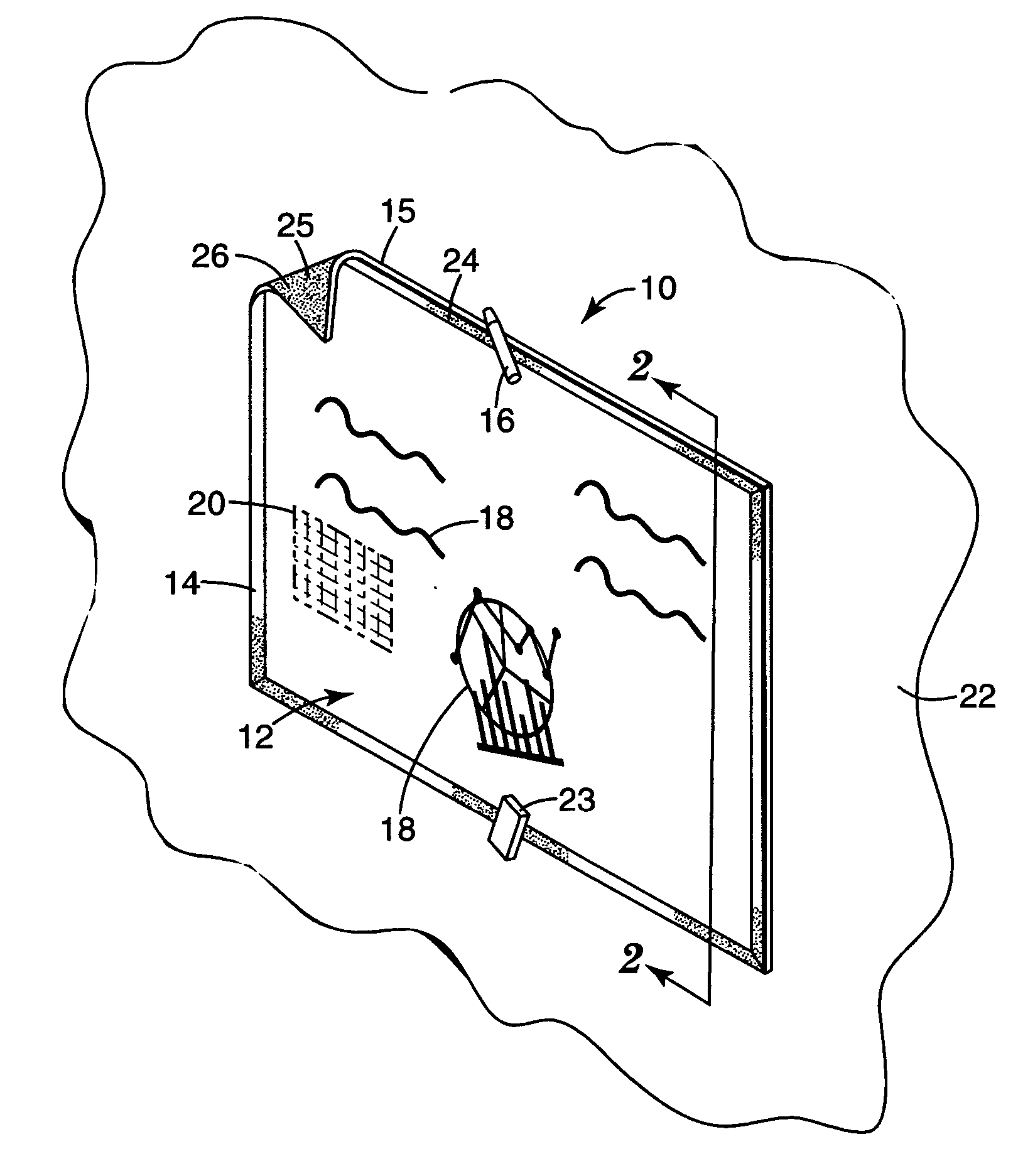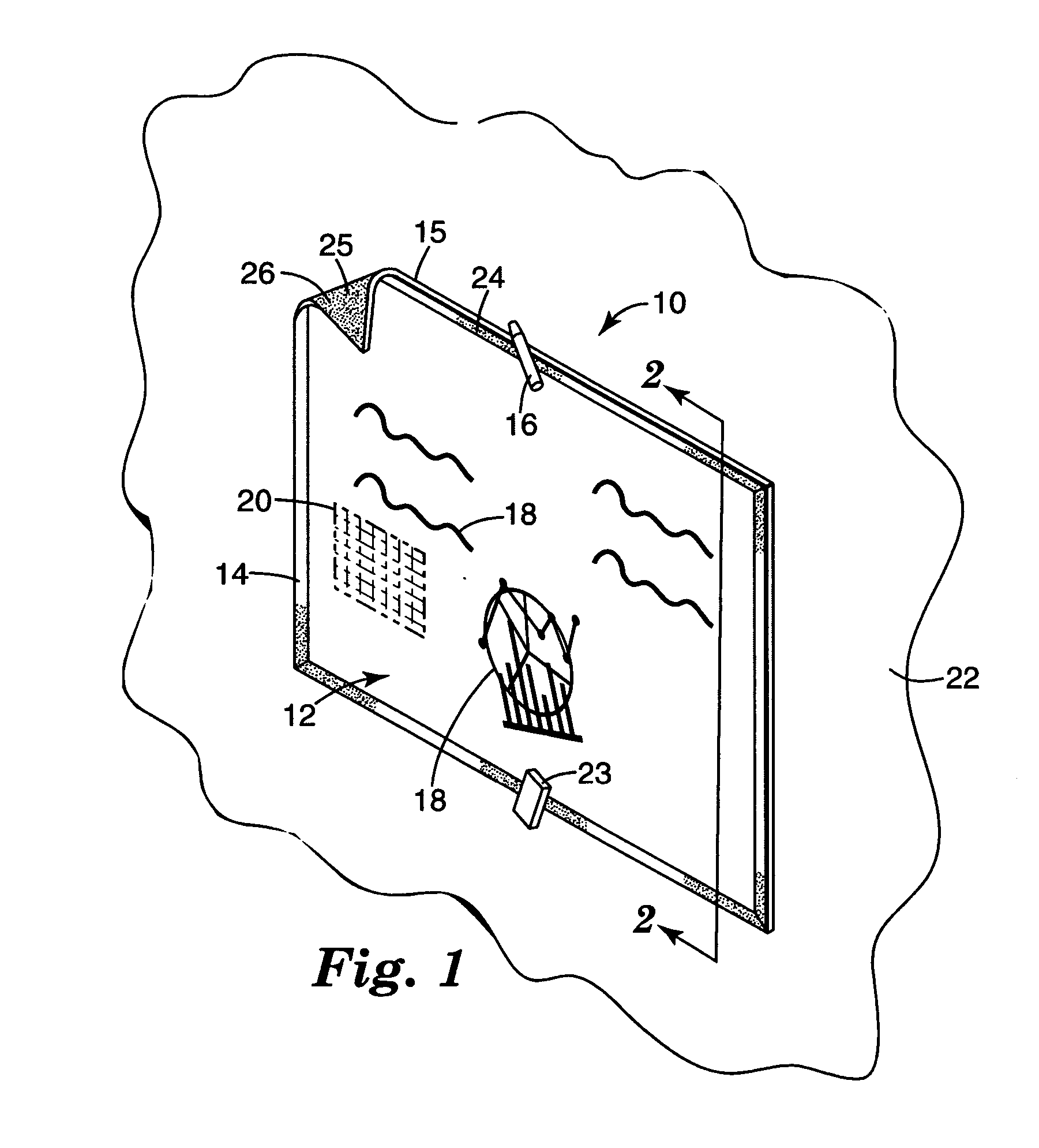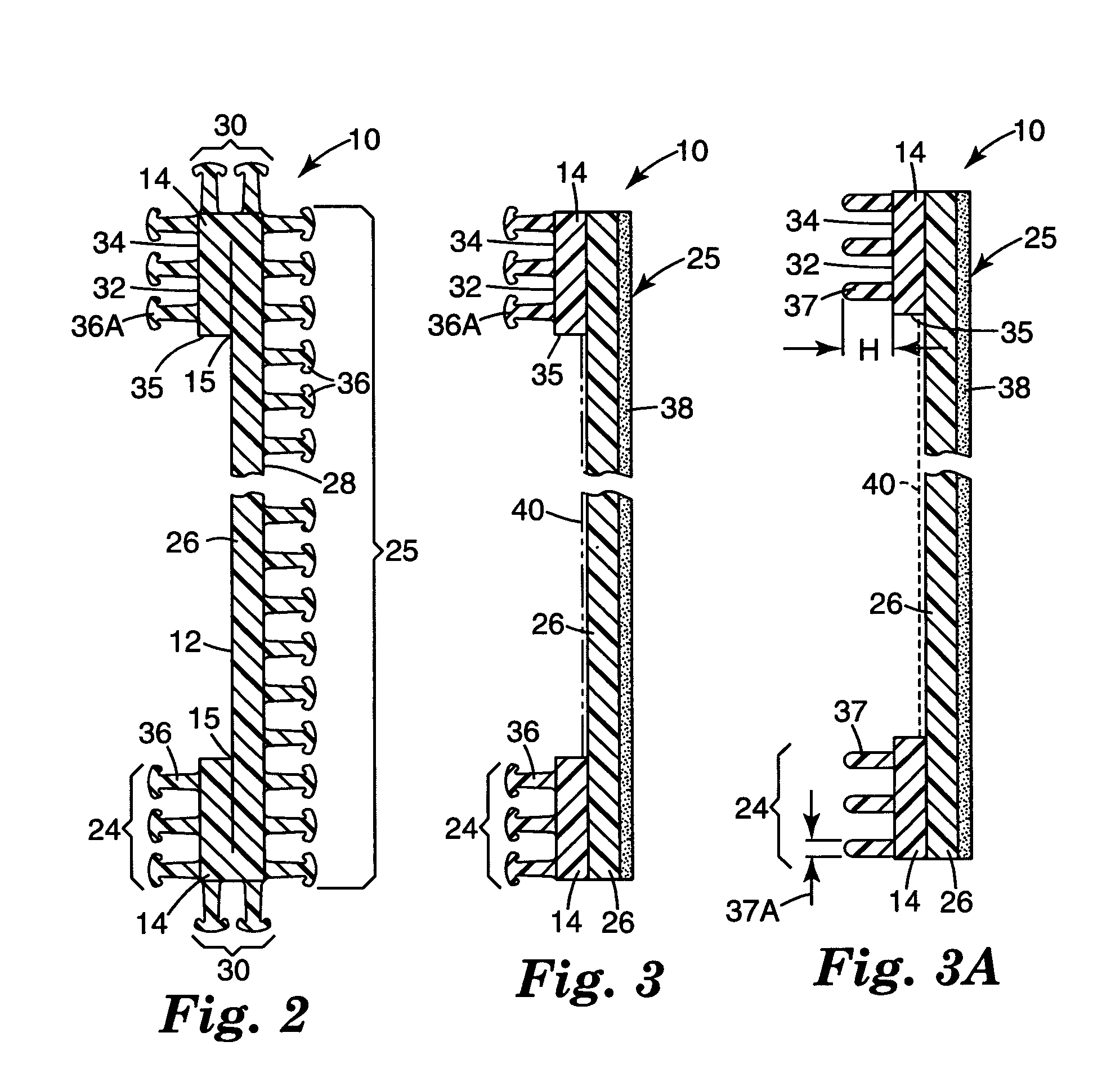Dry erase article
a technology of dry erase and articles, applied in the field of dry erase articles, can solve the problems of difficult mounting of dry erase products, inconvenient transportation to meetings, and inconvenient transportation of dry erase materials,
- Summary
- Abstract
- Description
- Claims
- Application Information
AI Technical Summary
Benefits of technology
Problems solved by technology
Method used
Image
Examples
example 1
Fabrication of a Decorative, Snag Resistant, Self-Engaging Fastener Material
[0066] A mixture was formed comprising 76.6% by weight of a polypropylene copolymer (Marlex HGZ-180, available from Phillips Sumika Polypropylene Company, The Woodlands, Tex.), 19.2% by weight of an impact modifying polypropylene resin (Adflex KS359P, available from Montell Polyolefins, Wilmington, Del.), 0.2% by weight of a blue colorant (IRGALITE® Blue GLG available from Ciba Specialty Chemicals, Tarrytown, N.Y.), and 4.0% of a fmely divided reflective material (used as a decorative agent). The resin mixture was melted and conveyed with a single screw extruder (Davis Standard, Somerville, N.J.). The extruder had a diameter of 6.35 cm (2.5 in), a length:diameter ratio (L / D) of 24 / 1, and a rising temperature profile ranging from 199° C. (390° F.) in the first zone after introduction to 218° C. (425° F.) in the final downstream zone. The polymer was passed through the extruder and continuously discharged at ...
example 2
Disengagement of Various Fastener Materials from Knitted Clothing
[0068] Pieces of fabric were cut from a knitted sweater (50% acrylic, 50% wool, Laura Scott Petite, Item # 33372, available from J. C. Penney Corporation, Inc., Plano, Tex.). A piece of male fastener material was placed on the outward facing side of each piece of fabric with the engagement surface of the fastener material against the fabric, and the two pieces were pressed together firmly. They were then placed together under an optical microscope, and micrographs were taken as the male fastener materials were separated from the knitted fabric material using tweezers. FIG. 5A is a micrograph image showing 3M™ Scotchmate™ fastener, male, cut loop type (available from 3M Company, St. Paul, Minn.). Threads of fabric are engaged strongly by this fastener system, and are clearly seen being pulled from the fabric during disengagement. FIG. 5B is a micrograph image showing Velcro® Industrial Strength Reclosable Fastener, mal...
example 3
Disengagement Force Required to Remove Various Fastener Materials from Carpet and Knitted Clothing
[0069] The disengagement forces required to separate a number of male fastener materials from various fabrics were measured. The fabrics were samples cut from knitted clothing (sweaters), as well as household carpeting. The sample numbers and descriptions of the fastener materials and the fabric samples are listed in Table 1.
TABLE 1Sample Numbers and Descriptions ofMale Fastener and Fabric MaterialsSampleDescription3.1Velcro ® Industrial Strength Reclosable Fastener,molded hook type, available from Velcro USA Inc.,Manchester, NH3.23M ™ Scotchmate ™ Hook and Loop Fastener, maleportion, cut loop type, available from 3M Company,St. Paul, MN3.33M ™ Command ™ Removable Interlocking Fasteners,available from 3M Company, St. Paul, MN3.4Scotch ® Reclosable Fastener, available from 3MCompany, St. Paul, MN3.5Snag-resistant fastener of Example 13.AKnitted sweater; 50% acrylic, 50% wool; Laura Sc...
PUM
 Login to View More
Login to View More Abstract
Description
Claims
Application Information
 Login to View More
Login to View More - R&D
- Intellectual Property
- Life Sciences
- Materials
- Tech Scout
- Unparalleled Data Quality
- Higher Quality Content
- 60% Fewer Hallucinations
Browse by: Latest US Patents, China's latest patents, Technical Efficacy Thesaurus, Application Domain, Technology Topic, Popular Technical Reports.
© 2025 PatSnap. All rights reserved.Legal|Privacy policy|Modern Slavery Act Transparency Statement|Sitemap|About US| Contact US: help@patsnap.com



